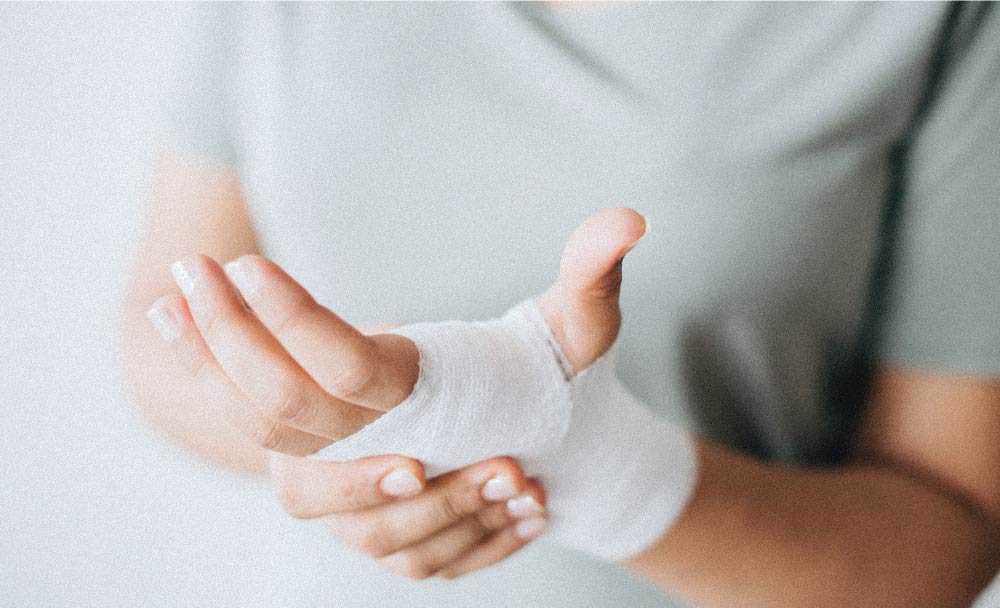
The Link Between Type 2 Diabetes And Oral Health
May 24, 2021
Defeat Diabetes Right From The Initial Stages With These Health Tips
May 26, 2021Diabetes comes with many unavoidable problems and complications. One of the many detrimental impacts of diabetes is the body’s inability to heal wounds faster. Getting a wound, cut or blister is unfortunately quite common. However, when a person has diabetes, these wounds may become fatal to their life if not treated timely. If you are not cautious to prevent wounds and cuts or do not monitor wounds closely, they may develop into infections and can spread to various tissues and parts of your body.
Although wounds and cuts can occur at any place in your body, the most common area to experience cuts is your feet. These wounds may develop into foot ulcers, leading to some serious health concerns. Many diabetics might have to get amputations in case of foot ulcers. Therefore, monitoring your body for cuts and wounds and treating them properly before the development of infection is extremely important. Even if the body does not develop an infection in wounds, diabetics have a much slower rate of healing wounds which can adversely affect their health and quality of life.
Why Wounds Heal Slowly In Diabetes?
High Blood Sugar Levels
High blood sugar levels reflect the deficiency in the production of insulin in the body. Insulin is essential for the efficient use of blood sugar. Without sufficient insulin in the body, cells might not receive the nutrients and oxygen required for their proper functioning which may delay the process of healing. High blood sugar levels also damage the immune system in the body and cause inflammation in the cells, further slowing down the process of healing.
Neuropathy
High blood sugar levels can also damage nerves and blood vessels in the body, a condition known as neuropathy. This can delay the process of healing in the affected area. Neuropathy can also make you lose sensation in your feet and arms, making you more susceptible to getting serious wounds or developing infections and ulcers as you might remain unaware of them.
Peripheral Vascular Disease
Peripheral vascular disease is a condition of poor circulation of blood in the body. People with diabetes are at a higher risk of developing this disease. In this condition, the blood vessels narrow down, impairing the flow of blood to the limbs. High blood sugar levels can also thicken the blood, further affecting the smooth flow of the blood in the body. Poor blood circulation can slow down the process of healing and may also lead to the development of many other diseases.
Weak Immune System
High blood sugar levels can adversely affect the functioning of the immune system in the body. The number of white blood cells or their ability to fight is vastly reduced due to high levels of blood glucose. This may delay the process of healing as well as make the body more susceptible to infections as the immune system is not efficient to fight off the bacteria and heal the wound properly.
Tips For Wound Treatment In Diabetics
If you get a wound, clean it immediately to prevent the development of infection. Apply an antibiotic cream on it and consult your doctor.
Remove dead cells and excess tissue from your wounds. Dead tissue can easily promote the growth of bacteria and elevate the level of infection on your wound.
Make sure that the dressing on your wound is always fresh. Keep changing them at regular intervals to slow down the growth of bacteria and treat infection well.
Don’t put pressure on the affected area. If the wounded area is your feet, make sure to wear comfortable shoes and avoid walking as much as you can.
How To Prevent Wounds And Heal Faster In Diabetes?
Wear comfortable footwear to avoid wounds and blisters on your feet.
Monitor your body regularly to check for infections or any other complications. Do self check-ups every day, especially on your feet.
The best way to improve the healing process in the body is to control high blood sugar levels. Eat a balanced diet at regular intervals to supply sufficient nutrients to the body. Avoid eating processed and packaged food and increase the intake of high-fibre food, fruits and vegetables in your diet to control diabetes.
Exercise is of vital importance in diabetes. It also boosts circulation in the body. Therefore exercise regularly to improve the healing ability of the body.
Quit smoking as it is the most hazardous habit in people with diabetes.
Takeaway:
If you are diabetic, you must try to avoid wounds as much as possible. The healing process of wounds is slowed down in people with diabetes for a number of reasons. Regular monitoring and self check-ups can help you prevent the growth of infection in case you encounter any wound. However, the best way to fight this problem is to keep your body healthy by controlling diabetes efficiently. Eat a balanced diet and exercise regularly to heal your wounds faster in diabetes.
Reference Links:
- https://www.healthline.com/health/diabetes/diabetes-and-wound-healing#see-your-doctor
- https://www.medicalnewstoday.com/articles/320739#causes
- https://www.ncbi.nlm.nih.gov/pmc/articles/PMC1857239/
- https://www.geisinger.org/health-and-wellness/wellness-articles/2017/11/08/20/05/3-reasons-diabetic-wounds-are-slow-to-heal





